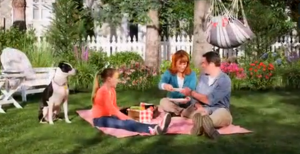Latest Posts
- Have a purpose when backyardingAugust 5 2021
- Study: Time outside alters our microbiomeAugust 4 2021
- Happy National Mutt Day from Mo-MoJuly 27 2021
- New home? Avoid these common mistakes in your yard.July 26 2021
- Infographic: Plan a backyard staycation this summerJuly 22 2021
Categories
Archive
May 12th
Best practices for your living landscapes

It’s that time of year when to-do lists and home projects begin migrating outdoors. Soon backyards will be bustling with BBQ gatherings, kids and pets playing in the yard, and al fresco dining.
All of this means you need to get your outdoor space in top form. Top dog TurfMutt is here to help with 3 best practices for your living landscapes.
- Select plants & grasses wisely.
Maybe you need to spruce up your outdoor space with some new plantings or grass. It’s important to choose the right turf grass and plants for your climate and lifestyle. Find your plant hardiness zone on the USDA Plant Hardiness Zone Map to determine what types of turf, trees, shrubs and plants will thrive in your location. - Don’t cut your lawn too short.
Maintaining your lawn at the right height helps keep it healthy by shading the roots and keeping weeds at bay. Cool-season turf (like Kentucky bluegrass) should typically be cut to about 1-4 inches high. On the other hand, the ideal height for warm-season turf (like St. Augustine) ranges from about ¾ of an inch to 1 ½ inches. A good green thumb rule is to never remove more than one-third of the total grass blade length in a single cutting. - Don’t overwater your lawn.
Grass gets lazy if you water it too much. When it’s over watered, grass grows its roots in a horizontal – rather than the optimal vertical – pattern. But with less water, grass will send its roots deeper, vertically, seeking moisture. This practice makes grass do a better job of sequestering carbon and releasing oxygen – just two of the many benefits of a living lawn.
Even if you live in a dry climate or one that’s currently in a drought, you can have a living landscape. To learn more, click here.





